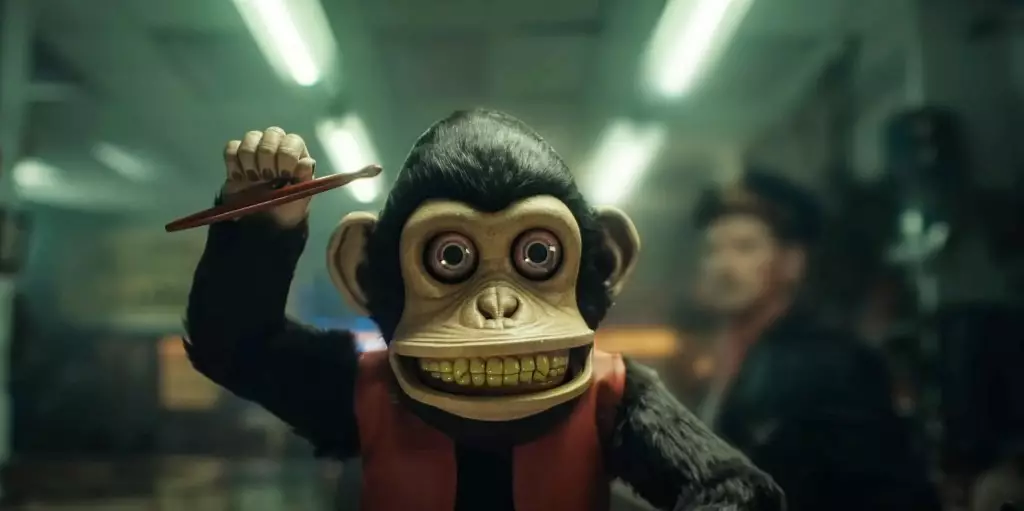The horror genre has consistently drawn audiences and created thrilling conversations, and the recent surge of films in this category is no exception. Among them, Neon’s latest release, “The Monkey,” is emerging as a standout, potentially securing the title for the best opening weekend for a horror film this year. With projections estimating earnings between $12 million and $14 million following its initial previews, this film is making waves in the box office and among audiences.
“The Monkey,” directed by Oz Perkins, achieved remarkable preview sales of $1.9 million, which includes various advance screenings. This figure sets a benchmark for the distributor Neon, as it follows the success of Perkins’ previous work, “Longlegs,” which boasted a $22.4 million opening weekend after a $3 million preview. The performance of “The Monkey” mirrors this success closely, marking the second-highest preview earnings for Neon.
When pitted against New Line Cinema’s “Companion,” which had $1.7 million in previews and ended with a $9.3 million opening, “The Monkey” appears to be in a different league. The anticipation surrounding its release has also climbed higher than that of “Longlegs” prior to its debut, creating a buzz that suggests the horror film market remains robust and ripe for innovative entries.
One of the notable aspects of the promotional efforts for “The Monkey” is its conventional campaign structure, which has drawn mixed reactions. While the marketing for “Longlegs” cleverly concealed key plot details through engaging YouTube shorts, promoting suspense and intrigue, “The Monkey” opted for a more direct approach, with its titular character prominently featured throughout various promotional materials.
Despite the increased visibility, reports indicate that audience interest is about seven points lower for “The Monkey” compared to its predecessor, suggesting that the traditional marketing route might not fully capitalize on the genre’s thrilling nature. It raises the question of whether suspense or surprise is the better tactic for horror film promotions.
The demographics for “The Monkey” reveal a promising turnout, with 63% of its audience falling within the coveted 18–34 age range, according to Comscore and Screen Engine’s PostTrak data. This young adult demographic is pivotal in driving the box office for horror films, which often rely on the thrill-seeking nature of younger viewers. Furthermore, the film’s reception has been fairly positive, garnering a 73% audience score on Rotten Tomatoes alongside a commendable 80% critical score. This indicates a solid foundation of acclaim that could enhance its longevity in theaters.
Neon’s financial investment in marketing, estimated at around $10 million for “The Monkey,” mirrors the spending for “Longlegs.” However, whether this expenditure translates into sustained box office success remains to be seen, particularly as competition intensifies from other films vying for audience attention.
The success of “The Monkey” is not only critical for Neon’s financial portfolio but also for the broader conversation currently surrounding horror cinema. With accolades in hand, including a shot at Best Feature at the Film Independent Spirit Awards for “Anora,” another Neon gem, the studio is navigating a pivotal moment in its trajectory.
Furthermore, mainstream films like Disney/Marvel Studios’ “Captain America: Brave New World” are expected to dominate subsequent box office weekends. However, the horror genre continues to carve out a significant niche, showcasing its enduring appeal and capacity for innovation. As the rankings fluctuate amongst releases, “The Monkey” stands as a testament to the resilience and evolution of horror films, promising an exciting future for audiences eager for both thrills and chills.
“The Monkey” has quickly positioned itself as a formidable contender within the horror film landscape, adeptly navigating the intricate dynamics of marketing, audience reception, and box office performance. The film not only amplifies Neon’s stature in the industry but also reaffirms the genre’s potential to captivate and engage audiences year after year.


Leave a Reply